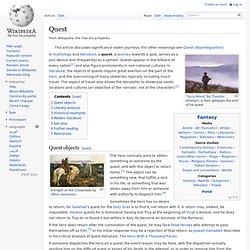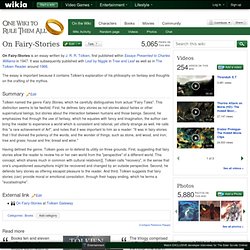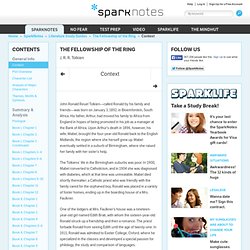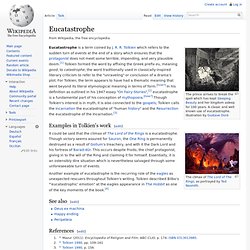

The Fellowship of the Ring. When the eccentric hobbit Bilbo Baggins leaves his home in the Shire, he gives his greatest treasure to his heir Frodo: a magic ring that makes its wearer invisible.

Because of the difficulty Bilbo has in giving the ring away, his friend the wizard Gandalf the Grey suspects that the ring is more than it appears. Some years later, Gandalf reveals to Frodo that the ring is in fact the One Ring, forged by Sauron the Dark Lord thousands of years before to enable him to dominate and enslave all of Middle-earth. Gandalf tells Frodo that the Ring must be destroyed to defeat Sauron's evil, but he also warns him that the Enemy has learned of the Ring's whereabouts from the creature Gollum and will seek to find it and kill its bearer. Freudo Baggins'in Mordor Yolculuğu.
Ruhtaki bozuklukların, acıların, marazın, altüst oluşların her birinin bir hikayesi var.

Sonu ister mutlu bir aile hayatında, isterse de tımarhanede bitsin, bu öykülerin her biri şaşırtıcı ölçüde bir diğerine benzer. Ayrıntılardaki farklılıklar sonsuzdur; şeytan da melekler de orada gizlidir zaten. Ama hikayeler daima bir yolculuğu anlatırlar; başı ve sonu olan, ister istemez de bir ortası bulunan birer yolculuğu. Yolculuğun nerede başladığı hayli belirsizdir. Ortası da öyle; yalnızca belli başlı kavşaklar, o da geriye doğru bakıldığında biraz bilinebilir. Don Quijote, bir ortaçağ romansı parodisi. Le Guin'in en başta alıntıladığım iddiasına geri dönersek, her fantastik (kurgusal) yolculuk bilinçdışına (onun deyişiyle "bilinçaltı zihne") yapılan bir yolculuktur. Arayış Macerası Türkçe'de "quest" kelimesinin bir karşılığı yok. Ortaçağ Avrupası'nda, bir şövalyenin onurunu ve yiğitliğini kanıtlamak için bir "quest"yerine getirmesi gerekirdi. Siren Çağrısı. Quest. Quest objects[edit] The hero normally aims to obtain something or someone by the quest, and with this object to return home.[3] The object can be something new, that fulfills a lack in his life, or something that was stolen away from him or someone with authority to dispatch him.[4] Sometimes the hero has no desire to return; Sir Galahad's quest for the Holy Grail is to find it, not return with it.

A return may, indeed, be impossible: Aeneas quests for a homeland, having lost Troy at the beginning of Virgil's Aeneid, and he does not return to Troy to re-found it but settles in Italy (to become an ancestor of the Romans). If the hero does return after the culmination of the quest, he may face false heroes who attempt to pass themselves off as him,[5] or his initial response may be a rejection of that return, as Joseph Campbell describes in his critical analysis of quest literature, The Hero With a Thousand Faces. Literary analysis[edit] Historical examples[edit] Modern literature[edit]
Tolkien On Fairy-stories. Tolkien On Fairy-stories.

J.R.R. Tolkien. Expanded edition, with Commentary and Notes by Verlyn Flieger and Douglas A. Anderson. London: HarperCollins Publishers, 2008. (This review originally appeared in Mythlore 103/104.) Reviewed by Jason Fisher. “On Fairy-Stories” by J. R. R. Tolkien. Goodreads: “On Fairy-Stories” Summary: In this essay, Tolkien explores the world of Faërie and the purposes of telling stories set in its realm.

He gives fairy-stories serious consideration, explaining why he feels they are even more relevant for adults than they are for children. Review: This essay is, essentially, Tolkien’s personal musings about fairy-tales. He begins by explaining what, exactly, he believes the definition of a true fairy-story to be, then goes on to argue why the tales are neither childish nor insignificant in our “practical” modern world. Tolkien is clearly a brilliant and well-read man, and parts of this essay can be difficult to fully appreciate, especially if you – like me – are not familiar with all of the tales Tolkien makes reference to. On Fairy-Stories. On Fairy-Stories is an essay written by J.

R. R. Tolkien, first published within Essays Presented to Charles Williams in 1947. It was subsequently published with Leaf by Niggle in Tree and Leaf as well as in The Tolkien Reader around 1966. The essay is important because it contains Tolkien's explanation of his philosophy on fantasy and thoughts on the crafting of the mythos. Summary Edit Tolkien named the genre Fairy Stories, which he carefully distinguishes from actual "Fairy Tales". The Fellowship of the Ring: Context. John Ronald Reuel Tolkien—called Ronald by his family and friends—was born on January 3, 1892, in Bloemfontein, South Africa.

His father, Arthur, had moved his family to Africa from England in hopes of being promoted in his job as a manager at the Bank of Africa. Eucatastrophe. The prince arrives to break the spell which has kept Sleeping Beauty and her kingdom asleep for 100 years.

A classic and well known use of eucatastrophe. Illustration by Gustave Doré Examples in Tolkien's work[edit] It could be said that the climax of The Lord of the Rings is a eucatastrophe. Though victory seems assured for Sauron, the One Ring is permanently destroyed as a result of Gollum's treachery, and with it the Dark Lord and his fortress of Barad-dûr. See also[edit] References[edit]